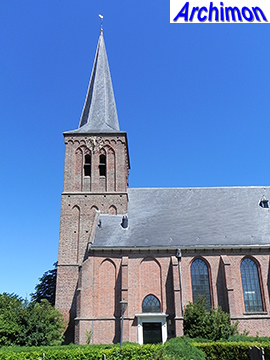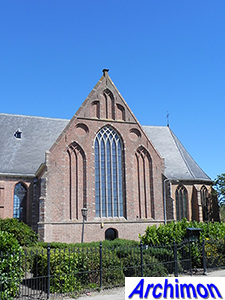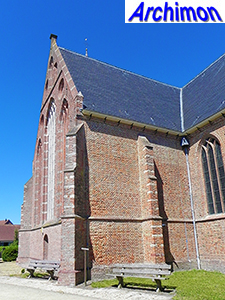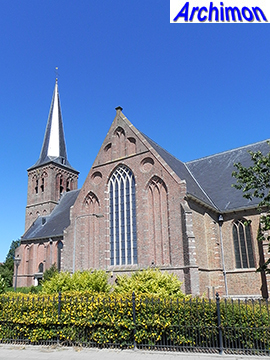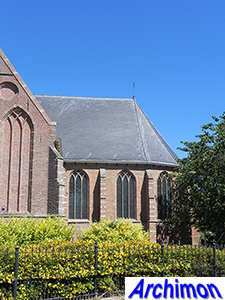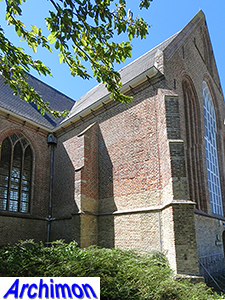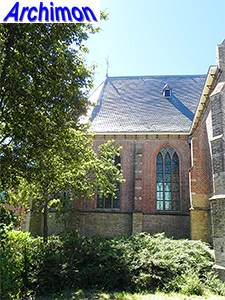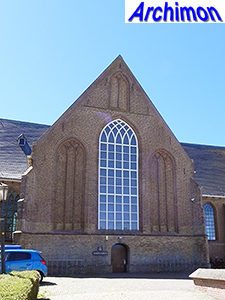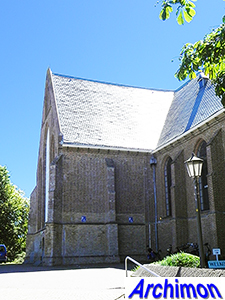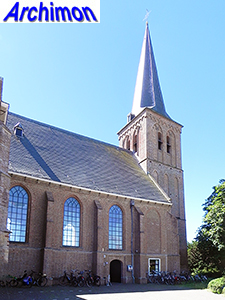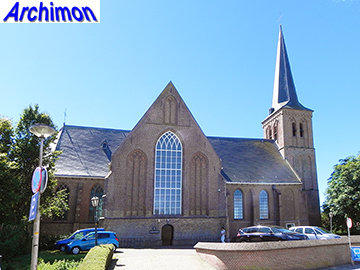
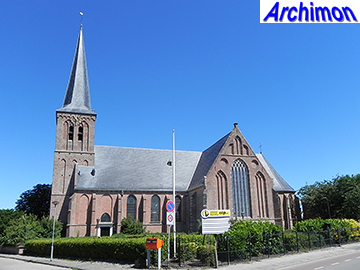 The
Utrecht Cathedral accounts first mention the St. Pancratius church of
Oosterblokker in 1395. There must however have been a church in the
village earlier than that, judging from several 12th-century gravestones in
Romanesque style. Also, parts of the church roof date from the 14th century and
were probably part of an earlier church.
The
Utrecht Cathedral accounts first mention the St. Pancratius church of
Oosterblokker in 1395. There must however have been a church in the
village earlier than that, judging from several 12th-century gravestones in
Romanesque style. Also, parts of the church roof date from the 14th century and
were probably part of an earlier church.
Apart from that, there is nothing left of that early church. The tower of
today's church probably dates from the middle of the 15th century. In the second
half of the 15th century the current nave replaced its predecessor. Like others
in this region, the nave is aisleless but wide. It's in a modest Gothic style.
The transept and the choir were both built in the second quarter of the 16th
century and are richer in style. The ornamentation of the transept walls, with
blind niches and traceries, is also found at many other Gothic churches in the
wider area. The church is entirely built of bricks, except for some
ornamentative use of natural stone, mainly in the buttresses of the transept and
the choir. The church is covered by the wooden construction of a barrel-vault to
which the planks were never attached.
Like all churches in this part of the country, the St. Pancratius became a protestant church after the Reformation and remained generally intact, although at some point part of the church was covered in plaster. An attempt by the catholics in ca. 1800, after the protestants had lost their privileged position, to have the church returned to them, failed. But in the 20th century it had become too big for the protestants and maintenance was neglected. By the 1940's its walls were in danger of collapsing and a big wooden pole was put in place to support the wooden roof construction. Eventually the protestant community had to abandon the church. In ca. 1970, the choir and the roof were finally restored but otherwise the church was still left to the elements. The continued discussion about the state of the church finally resulted in a restoration between 1985 and 1989. It reopened that latter year as a cultural center.


